
The Sanctuary
The Sanctuary Site in Port Hilford Bay, Nova Scotia
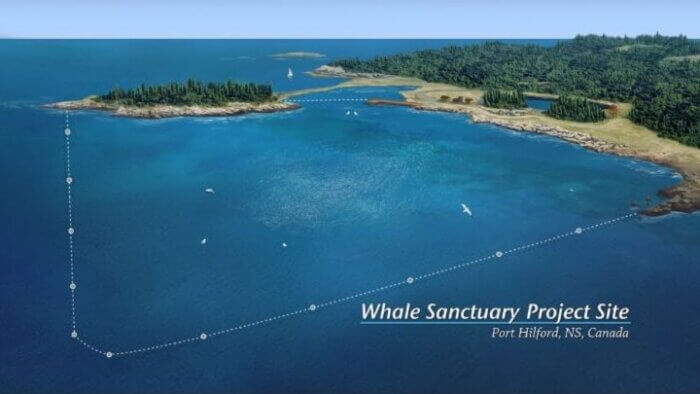
This inspiring site in Port Hilford Bay, Nova Scotia, offers expansive space and good depth for the whales to swim, dive and experience a natural sea-side environment.
They will be able to explore the seafloor, chase birds on the surface and spend their time in nature. They will have a new life that makes up for as much as possible of what went before.
The sanctuary will occupy more than 100 acres of water space with depths up to 18 meters. It is being designed to set the gold standard for many more that can then be built all over the world in the coming years.
A complete timeline of our work to date on establishing the sanctuary:
Go to the Timeline page.
Three Video Tours of the Sanctuary
An aerial tour of the sanctuary site.
Walk along the shore with Executive Director Charles Vinick as he explains where the buildings and infrastructure will be.
And come aboard our work boat as Charles takes us for a 1.5-mile (2.4k) tour around the perimeter of the sanctuary.
What Is a True Sanctuary?
An authentic sanctuary is by definition a place where the wellbeing of the residents is always the priority. Lots of facilities call themselves “sanctuaries.” How can you tell whether they really are authentic? Check out this post and this webinar.
Site Development Work, Leases & Permitting
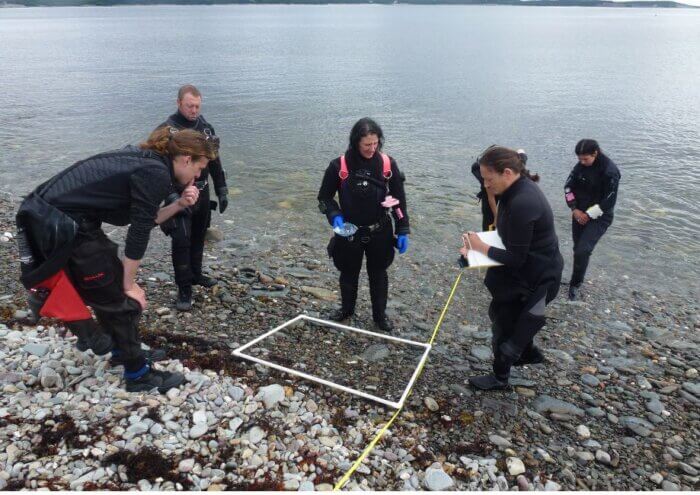
Nothing is more important than ensuring that the sanctuary area is a safe and healthy habitat for the whales and that the whales will be a positive contribution to the bay and all its inhabitants.
Immediately after announcing our choice of Port Hilford Bay for the location for the sanctuary, we began a series of environmental studies. This detailed work involves expert analysis of everything from microorganisms, water pressures and temperatures through every season over two years to gaining a full understanding of the soil and rock on land and on the seabed.
Many of these studies are also required by law before permits can be granted for construction of the sanctuary and transfer of the whales.
Dive into the Environmental Analysis
On the water, the team’s studies have included water chemistry, salinity, and temperature gradients, along with currents, tides, waves and surges, plus multibeam sonar, acoustic doppler current profilers, hydrophones and hydrodynamic models. Explore these here.
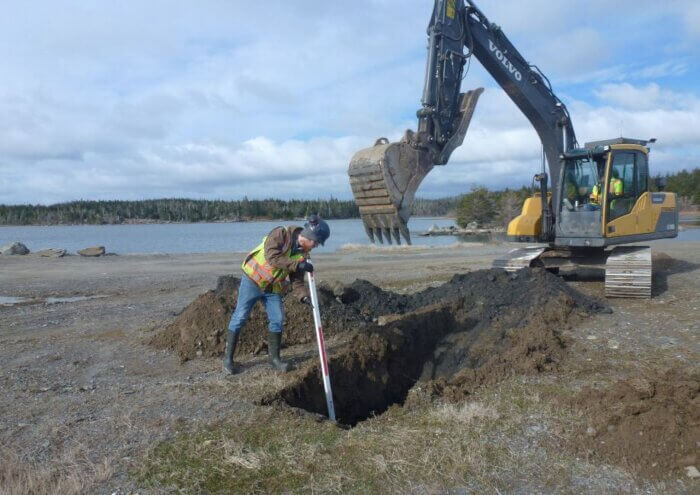
On land and seabed, studies of soil and rock help us determine how best to anchor the nets that will surround the sanctuary waters.
To learn more about the studies, the permits and the lease on sanctuary waters, go here.
And for a complete timeline of our work to date on establishing the sanctuary, go to the Timeline page.
Perimeter Net and Sanctuary Structures
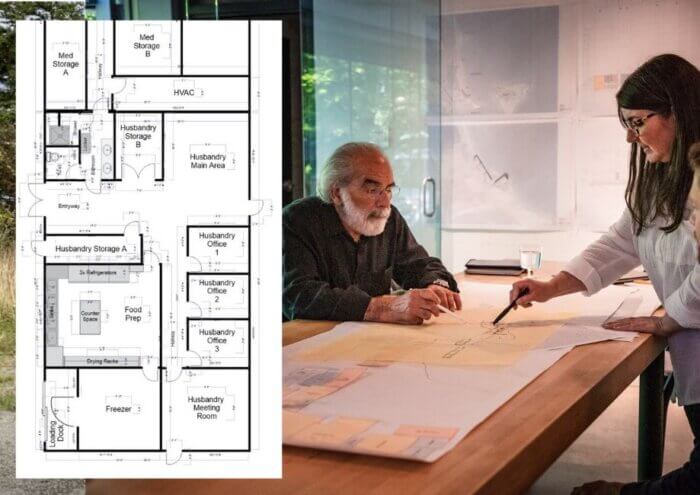
The perimeter net will enclose the 100 acres of sanctuary waters, anchored on land at Rocky Point at one end and at the tip of Barachois Island at the other. (Check out this video tour to follow the line of the net.)
The net, the structure that supports it, the anchor and the outer cork line will employ a state-of-the-art design that provides for a walkway, allowing staff members direct access to the whales for routine care, medical care and other special circumstances.
More about the Structures
More details about the state-of-the-art perimeter net and the outer cork line.
Also:
• Animal Care & Veterinary Center;
• Marine Operations, Security & Administration Building;
• Net Loft and Generator Storage Building;
• and Observation Tower.

Go here to see plans and layouts.
Operations & Visitors Centre
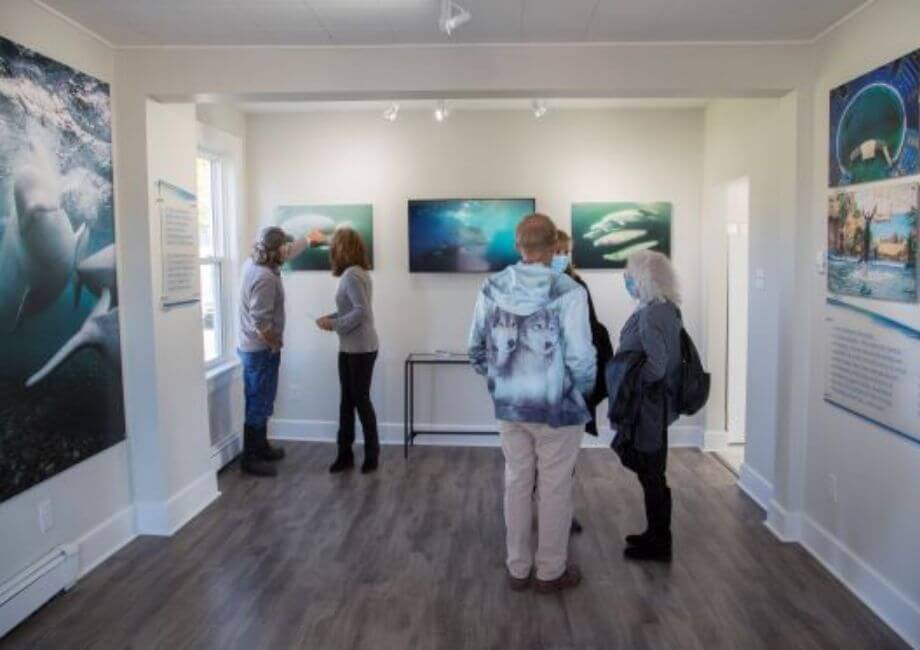 Displays at the Centre illustrate the difference for whales between life in a concrete and life in an ocean environment.
Displays at the Centre illustrate the difference for whales between life in a concrete and life in an ocean environment.
The Operations & Visitor Centre is in the small town of Sherbrooke, Nova Scotia, a three-hour drive from Halifax and about 20 minutes from the sanctuary site in Port Hilford Bay.
The centre welcomes visitors from near and far. A restored century home, it is the local home base for directing the design, engineering and construction of the sanctuary, with a full conference room and an overnighting area for visiting staff members and advisors.
Amy Simon, Outreach Coordinator in Nova Scotia, is the host at the Visitors Centre, with the help of some stellar volunteers.
During your visit you can walk through an exhibit of photos and videos about what life is like for whales in the barren tanks of marine entertainment parks, and another about how the sanctuary will give them a new life that is “back to nature.”
For more about the Operations & Visitors Centre, see this blog post.
Visiting the Centre
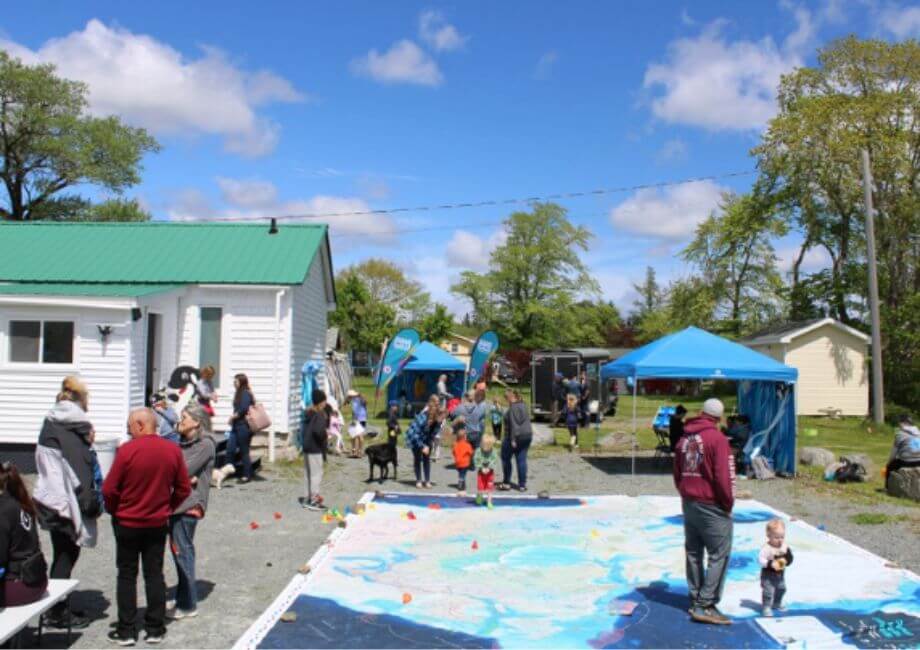 World Ocean Day at the Centre.
World Ocean Day at the Centre.
The Centre is open to visitors three days a week.
Mondays and Fridays from 10am to 1pm.
Wednesdays from 4pm to 7pm.
Hours vary in winter months subject to local weather conditions. If you’re planning a visit during the winter, please check our local Facebook page for details.
The Centre also hosts numerous special events. Again, check our local Facebook page for details.
And for an example of a typical event, see this blog post.
Address:
Whale Sanctuary Operations & Visitors Centre
8186 Trunk Highway 7, Sherbrooke, Nova Scotia B0J 3C0
Visiting the Sanctuary Site
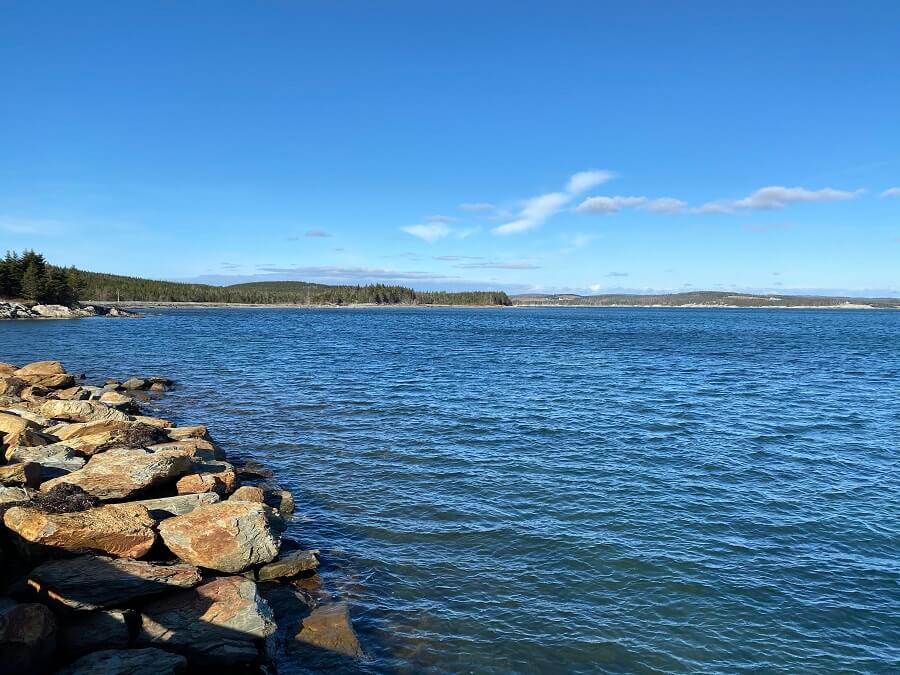 The sanctuary waters from the wharf.
The sanctuary waters from the wharf.
Areas surrounding the sanctuary site are private property. Local staff conduct occasional tours to the site at times that are compatible with the work of site engineers.
The sanctuary site can be viewed from Port Hilford Beach on the other side of the bay. Bring your binoculars for the best experience.
For further info please email amys@whalesanctuary.org.
The Whale Sanctuary site and the Operations & Visitors Centre are located in Mi’kma’ki, the unceded and ancestral territory of the Mi’kmaq people.
The Two-Year Search for the Ideal Location
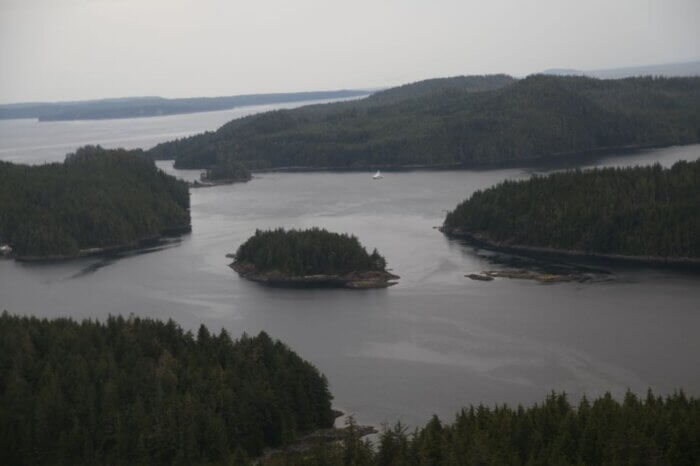
Starting with charts and maps and recommendations, we researched 135 possible locations in Washington State, British Columbia and Nova Scotia. We narrowed the list down to 30 sites and then visited all of them.
Some were too remote, others too close to built-up civilization. We focused on three main factors: the essential physical criteria of land and water; potential impacts on and from local wildlife; and community interests, including concerns of local residents and commercial and recreational interests.
The site that met – indeed exceeded – all of these three factors was in Port Hilford Bay. And we were delighted to be able to select it as our preferred site and to begin work on environmental analyses and on securing the land for the sanctuary structures and the lease for the sanctuary waters.
Follow the Search as It Unfolded
Check out this series of posts about our search on the west and east coasts of North America and what we learned about what constitutes an ideal site for a whale sanctuary.

Above: During our first visit to Nova Scotia, the town council of Sherbrooke, close to Port Hilford Bay, invites us to one of their committee meetings.